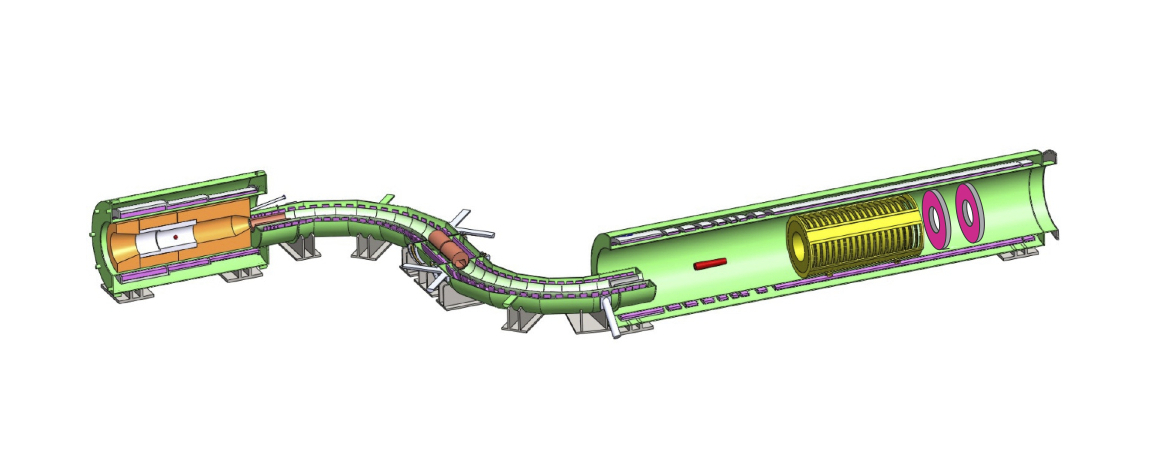How does it work?
The Mu2e experiment at Fermilab will be 10,000 times more sensitive than previous experiments looking for muon-to-electron conversion. This precise and complex apparatus will be able to produce 200 million billion muons per year. It will require modifications of the Fermilab accelerator complex. Mu2e will repurpose elements of the complex that had produce anti-protons for the Tevatron experiments so that they instead are used to produce the muons needed for Mu2e and the Muon (g-2) experiment.
The Fermilab Booster will accelerate protons to the 8 GeV needed to produce the intense muon beam for Mu2e.
The protons will travel from the Booster to the Recycler where they will be stacked, bunched, and extracted to the Delivery ring. The Delivery ring is located in the repurposed Debuncher. The reuse of these components and beamlines allows for a cost effective way to deliver protons to Mu2e. Once in the Delivery ring the protons will be slow extracted and delivered to the Mu2e apparatus.
The Mu2e design is based on the MECO experiment proposed at Brookhaven National Laboratory in the 1990s and MELC experiment proposed at the Moscow Meson Factory before that. A system of three superconducting solenoids magnets will produce and transport the low-energy intense muon beam and then detect the conversion to electrons from stopped muons.
The 8 GeV protons will arrive in bunches from the Delivery ring and enter the Mu2e production solenoid at a slight angle to its axis and strike a tungsten production target about the size of a pencil. These collisions will create a cascade of particles, including pions that decay into muons. The magnetic field of the production solenoid will capture some of the muons and spiral them into the transport solenoid. Only about 1 in 300 protons that collide with the production target will generate a muon that moves into the transport solenoid. Throughout the experiment's projected three-year running period, roughly 10 billion muons per second will be stopped.
Muons in the transport solenoid will travel to a detector inside an evacuated vessel. The detector consists of two main parts. A magnetic spectrometer measures the particle momentum. An electromagnetic calorimeter tells the electronic system what particle interactions to record for further study and confirms the measurements taken by the magnetic spectrometer.
Improvements to the accelerator could extend the initial experiment's sensitivity by a factor of ten or more. This is comparable to Mu2e initially producing a number of muons equivalent to all the grains of the grains of sand on the Earth's beaches. This would provide a valuable tool for physics research whether or not Mu2e discovers muon-to-electron conversion during its first, lower-intensity phase. If Mu2e does observe charged lepton conversion, an upgraded accelerator would enable Mu2e to study in depth the details of the conversion by providing more data. If Mu2e does not observe the conversion, the collaboration could continue the search with a wider net and also search for signs of never-before-seen physics in rare processes that have previously been out of reach of physics machines.
| Further reading: | |
|---|---|
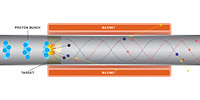
|
To make muons, physicists smash bunches of protons into a small tungsten target. Magnetic fields steer the muons in the correct direction. (Click image for larger version) |
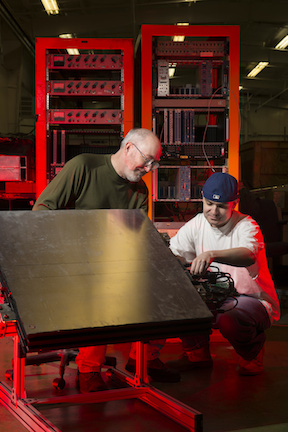

|
Physicists verify the expected performance of the Mu2e detector by contructing smaller scale protptype detectors.
They test the performance of the prototypes using Fermilab's test beam facility or using through-going cosmic rays. (Click image for larger version) |

|
Mu2e is working closely with industry to develop new superconducting cables. These new cables are needed to build
the three custom superconducting magnets that are at the heart of Mu2e. (Click image for larger version) |
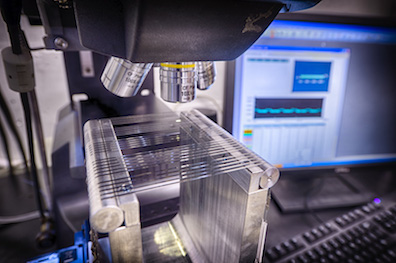
|
To build the Mu2e experiment will require improving existing technologies and methodologies or inventing new ones.
Measurements are made on a series of thin foils that may be used in an electrostatic septa - a
device that will strip-off a small piece of a circulating proton beam and send it to Mu2e. (Click image for larger version) |
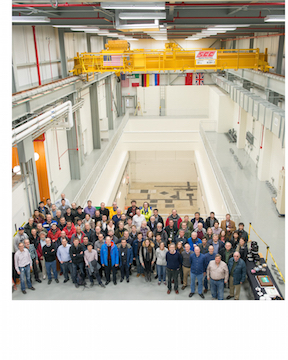
|
A team of physicists from all over the world, including postdocal researchers and graduate and undergraduate students, are working together
to design, test, and build the Mu2e experiment. The Mu2e Collaboration is comprised of over
two hundred physicists and continues to grow. (Click image for larger version) |


 European Project
European Project


